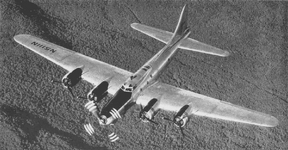Thumpalumpacus
Lieutenant Colonel
Yeah, I'm not sold. Top turrets can't shoot downwards, waist gunners have no time to line up shots, so you've got the chin and the bubble for straight-line shooting for a pass. Hope you armor them up for those 3000' passes ... which will only make them slower.
There's no M-61 in 1943, and you're not squeezing a 105 or even a 75 in there sideways. Orbiting in .50 cal range when the enemy AA has quad 20s might not be conducive to health and well-being.
There's no M-61 in 1943, and you're not squeezing a 105 or even a 75 in there sideways. Orbiting in .50 cal range when the enemy AA has quad 20s might not be conducive to health and well-being.
Last edited:

